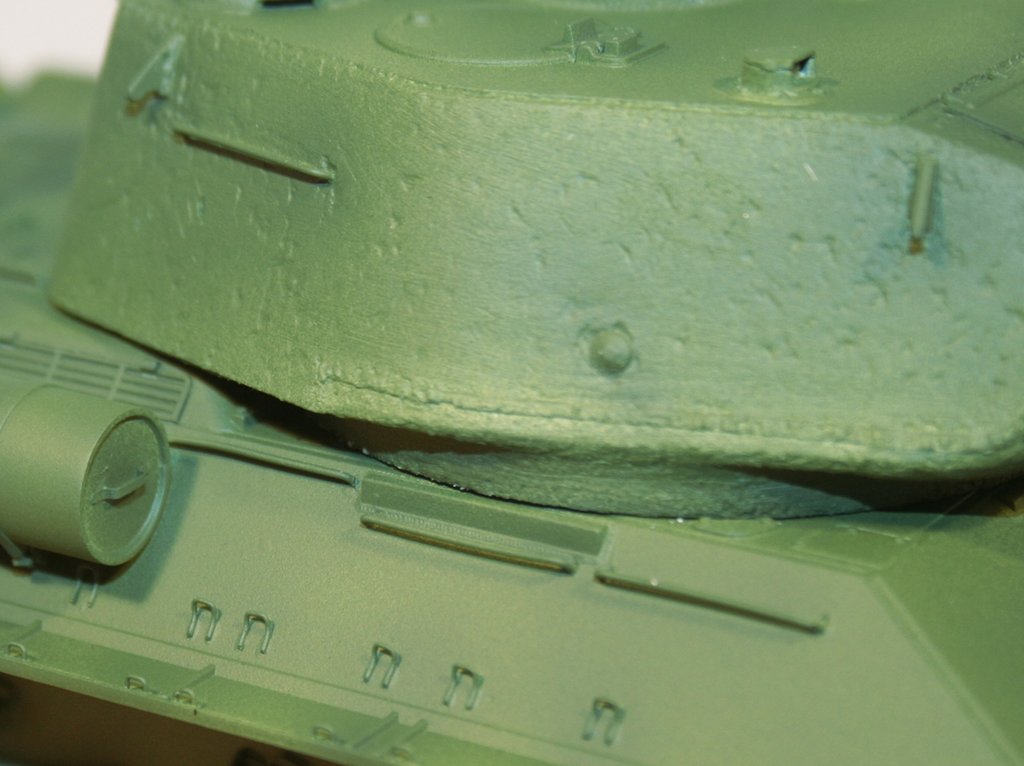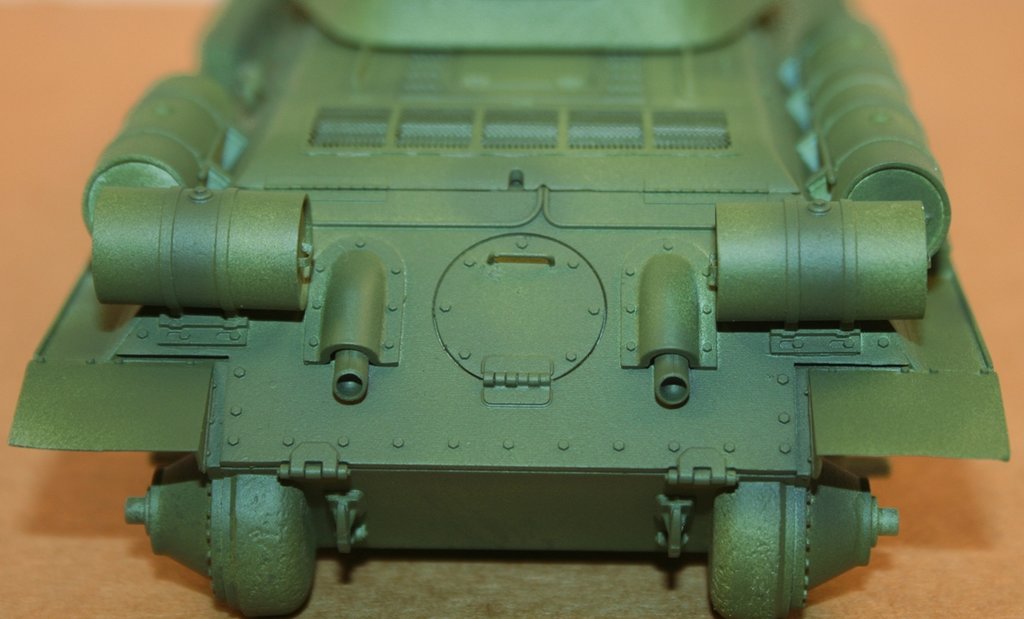Hi Thomas. Nice paintjob so far. Here's what I would do (and keep in mind that those steps don't have to be the right procedure for effects you are after, everybody has its own methods):
1. maybe lightly overspray with very diluted lighter shade of green to lighten up the base a little because next steps and weathering will darken the paint anyway,
2. seal the paint with satin varnish,
3. apply oil filters (very diluted oil paint, some 80-90% thinner to paint ratio). Filters will neutralise boring single colour. Experiment and play with greens, browns, yellows, blues. Use wide brush and don't "paint" the filter, try to apply it as quickly as possible. Let dry between layers (sometimes it can go up to 7-8 layers of different colour of filters),
4. when dry (I leave oils to dry few days)seal with gloss varnish,
5. apply decals, when dry, reseal with satin varnish,
6. apply "oil dot method", that will bring more "life" into paint (in multi colour schemes it will help to blend everything together),
7. apply gloss varnish,
8. pin washes with oils to make all the details pop up
9. when dry, seal everything with matt varnish
10. weathering with pigments, mud, etc. how you like.
Again, that's the way I usually do. Sometimes I skip filters if I think that "oil dot method" will overpower it. Experiment and play, that's the beauty of it.
























